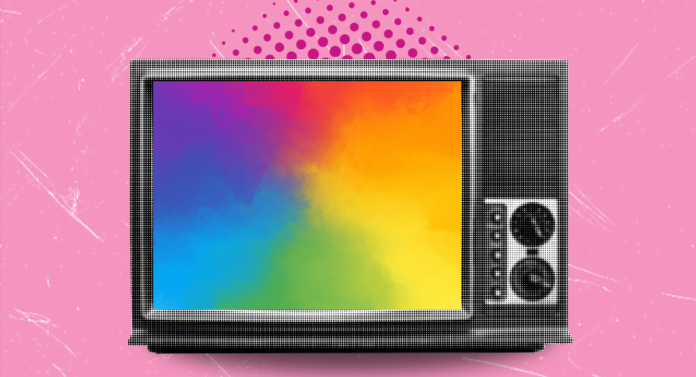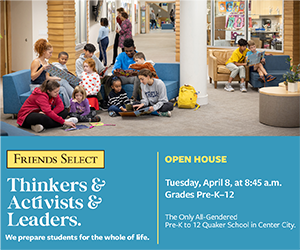
This article originally appeared in News is Out.
America is more LGBTQ+ than ever. The latest 2024 Gallup poll finds LGBTQ+ identification in the U.S. expanding annually with 7.6% of U.S. adults now identifying as lesbian, gay, bisexual, transgender, queer or some other sexual orientation other than heterosexual. This percentage is up a full 2% from 5.6% four years ago and is more than double the 3.5% of 2012, Gallup’s first year of surveying sexual orientation and transgender identity.
With the country divided politically and LGBTQ+ people under attack from the GOP, LGBTQ+ visibility is more crucial than ever and that means seeing representations of queer and trans people reflected in the still-dominant media of TV. Depictions of LGBTQ+ people on the small screen and ever-expanding streaming services is essential. Is that representation happening as fast as the declared community is growing or reflecting as equivalent gender, racial, ethnic and age diversity?
GLAAD says no. GLAAD notes just over a third—38%—are satisfied with how LGBTQ+ people are represented.
Past as Prologue
It’s been 24 years since Showtime’s “Queer as Folk” hit cable and 20 since “The L Word” dropped on the same network. These wildly popular series reset the TV landscape with their depictions of out gay, lesbian and bisexual characters. “The L Word” also had trans and nonbinary characters in play. These series helped to bring realistic stories to the screen by centering queerness and building society around these characters interstitial to the larger straight society, rather than making them a footnote to straight society that could be easily excised.
In 2009, “Glee” gayed and transed up high school, depicting it the way we always knew it should be and how Gen X and Boomers would have liked to experience it—drama was more than just a club, it was a lifestyle. Also in 2009, the sitcom “Modern Family” debuted with TV’s first long-term, main-character gay-male couple. In 2018, “Pose” brought 1980s ballroom culture and the AIDS crisis to the screen, telling those stories with breadth and heartbreaking realness.
Three showrunners—Ryan Murphy, Shonda Rhimes and Greg Berlanti—queered up network TV over 20 years with series that centered LGBTQ+ characters and integrated them fully into the larger storyline in shows like “Glee,” “Grey’s Anatomy,” “Scandal” and the Arrowverse that monopolized major TV networks.
The stories that these showrunners presented—with “Pose” being a sine qua non of this oeuvre—a story for us, about us, written by us and with us, starring out gay, lesbian, trans and nonbinary actors playing gay, lesbian, trans and bisexual characters. It set a tone for future programming. But has that promise been met by other series and other showrunners? Rhimes moved to Netflix, while Murphy and Berlanti have continued to plumb network and other streaming venues. Both out gay men have brought a breadth of queer- and trans-centered programming to the screen.
More Series, Fewer Characters
While we see more and more LGBTQ+ characterizations and stories on TV, those storylines are often still tacked on or dropped in. Not necessarily after-thoughts, but nor are they inextricable to the series’ landscape. This allows for the appearance of more LGBTQ+ characters, which bumps up quotas, but often they are secondary and tertiary—not main figures.
Series that resonate over time are those where the queer/trans characters are defining. Yet what we haven’t seen yet, inexplicably, is some of the longest-running TV series featuring LGBTQ+ characters in their central lineup. How has NBC’s “Law & Order: Special Victims Unit” been on air for 25 years—the longest-running prime time series—without a main character who is gay in New York City? The same is true of the original “Law & Order.” Additionally, “Chicago P.D.” is about to air its 12th season with no LGBTQ+ characters in Chicago. Meanwhile, Rhimes’s ABC series, “Grey’s Anatomy,” now entering its 21st season, had the first long-term lesbian coupling and has had gay, nonbinary and trans characters as well as racial and ethnic diversity.
In what ways does TV continue to fail LGBTQ+ audiences of all ages? A series like HBO’s “Euphoria” touched many millennial and Gen Z viewers with its queer and trans characters as did USA’s “Chucky.” Yet in series after series, lesbian characters continue to be killed off and gay male characters appear as the only one of their ilk.
Genre TV Serves Best
The best LGBTQ+ programming continues to be found in historical dramas, sci-fi or young adult shows: “Gentleman Jack,” “Interview with the Vampire,” “It’s a Sin,” “Skins,” “Grantchester,” “Wynonna Earp,” “American Horror Story,” “The Last of Us,” “Heartstopper” and “The Umbrella Academy” all exemplify the best of LGBTQ programming.
At the same time, even as many TV series acknowledge queer and trans identity with characters that are peripheral, if such characters aren’t fully integrated into the series landscape, are we reaching full representation or still sliding off surface depictions?
Series like “The L Word,” “Pose” and “It’s a Sin” are so uniquely and multifacetedly LGBTQ+, reflecting such a multiplicity of storylines, characters and characterizations and offering a tantalizing entree into what is possible for LGBTQ+ TV. A series like “The Last of Us,” because of its dystopian landscape, allows the writers to invent unique scenarios, like the relationship between Bill and Frank—two bearded men in beautiful, romantic love at the end of civilization.
What More Can We Expect
Still, within the context of general drama, comedy and multi-purpose TV series, how are LGBTQ+ viewers getting the storylines they crave that reflect them appropriately or even adequately? That 38% number remains in glaring opposition to what is being offered by showrunners who aren’t Ryan Murphy or Greg Berlanti.
Consumers and activists must play a role. Demands can and should be made by writers, actors, directors and advocacy groups like GLAAD and HRC to push producers to create series that offer LGBTQ+ viewers the authentic stories, characters and representations we need and deserve and which open the door for all viewers to imagine a world in which they too play a role and belong.
